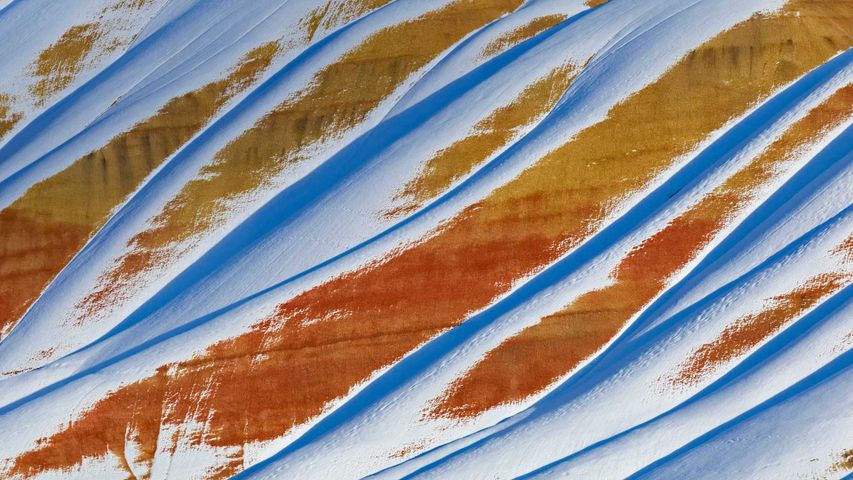Saffron crocus flowers in Spain
© Juan-Carlos Munoz/Minden Picture
Saffron in bloom. Saffron in bloom
It's harvest time for saffron, the precious seasoning that's mostly grown in Iran, but used in cuisines around the world. Saffron is derived from the saffron crocus, an autumn-flowering plant with purple petals as richly hued as the vivid crimson stigmas (called 'threads') in the center of the bloom. These threads are carefully extracted by hand with tweezers and dried before they're used for cooking. Each flower comes with just three threads, and it takes a lot of them—roughly 75,000 crocuses will yield just one pound of saffron. The entire harvest can last only about a week or two, because that's the short life of the saffron crocus bloom.
This time of year, the small Spanish town of Consuegra celebrates the end of the harvest season with a saffron-themed festival. This is home to some of Spain's best-preserved windmills, which traditionally milled the wheat grown in the region. During Consuegra's Festival de la Rosa del Azafrán (Festival of the Rose of Saffron), locals dress in traditional clothing and ceremonially grind some wheat in one of the old windmills. But feasting on regional cuisine is the highlight of the festival, and saffron is at the center of activities, complete with a saffron extracting competition. The contest honors the difficulty of picking the threads from the flower.
Related Images
Bing Today Images




 Formal garden at Château de Villandry, Loire Valley, France
Formal garden at Château de Villandry, Loire Valley, France
 Mangrove forest in the Saloum Delta National Park, Senegal
Mangrove forest in the Saloum Delta National Park, Senegal
 Adélie penguin in Graham Passage, Antarctic Peninsula, Antarctica
Adélie penguin in Graham Passage, Antarctic Peninsula, Antarctica
 A bee dives into a lotus flower at Kenilworth Park and Aquatic Gardens in Washington, DC
A bee dives into a lotus flower at Kenilworth Park and Aquatic Gardens in Washington, DC
 Dubai Miracle Garden, United Arab Emirates
Dubai Miracle Garden, United Arab Emirates
 Channels of the Rio Tinto in Spain
Channels of the Rio Tinto in Spain
 Snow covering the Painted Hills of John Day Fossil Beds National Monument in Oregon
Snow covering the Painted Hills of John Day Fossil Beds National Monument in Oregon
 Mexican giant cardon cactus
Mexican giant cardon cactus

